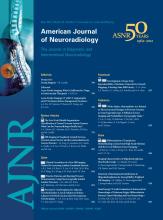Abstract
SUMMARY: This clinical report describes the enhancement characteristics of hypersecreting parathyroid lesions on dual-phase neck CT. We retrospectively analyzed the enhancement characteristics of 5 pathologically confirmed PTH-secreting lesions on dual-phase CT examinations. Attenuation values were measured for PTH-secreting lesions, vascular structures (CCA and IJV), and soft tissue structures (thyroid gland, jugulodigastric lymph node, and submandibular gland). From the attenuation values, “relative enhancement washout percentage” and “tissue-vascular ratio” were calculated and compared. All lesions decreased in attenuation from arterial to venous phase, while the mean attenuation values of other soft tissue structures increased. A high relative enhancement washout percentage was correlated with parathyroid lesions (P < .006). The tissue-CCA ratio and tissue-IJV ratio for PTH-secreting lesions in the arterial phase were statistically significantly higher compared with soft tissue structures (P < .05). If these results are validated in future larger studies, noncontrast and delayed venous phases of 4D-CT could be eliminated to markedly reduce radiation exposure.
ABBREVIATIONS:
- CCA
- common carotid artery
- HU
- Hounsfield units
- IJV
- internal jugular vein
- PTH
- parathyroid hormone
- ROC
- receiver operating characteristic curve
- © 2012 by American Journal of Neuroradiology












